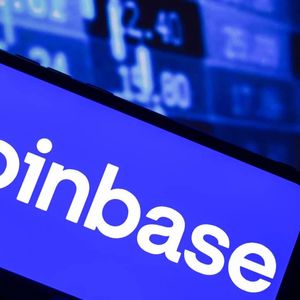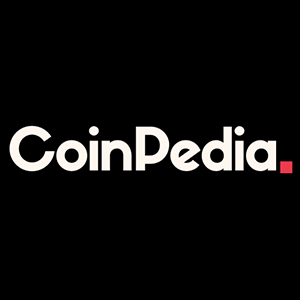Summary The SEC's approval of IBIT options is a watershed moment for Bitcoin; options can greatly enhance liquidity. Options trading on IBIT will unlock new pools of capital, allowing institutional investors to confidently engage in BTC exposure while mitigating downside risk. IBIT's dominance in the Bitcoin ETF landscape is set to accelerate, offering both spot market access and the flexibility of options trading. I discuss the reflexivity of gamma squeezes and how this now affects BTC's price on a rational expectations model. The approval of IBIT options cements BTC as a major asset. The SEC approved the listing and trading of American options on the iShares Bitcoin Trust ETF ( IBIT ) on Friday, 20 September 2024. The OCC and CFTC still have to give their approvals, but SEC approval means the hard part is likely over. The listing of IBIT options would be a watershed moment for Bitcoin ( BTC-USD ), potentially much larger than the approval of the spot ETFs in January. This article will analyze the consequences of this development, and expand on some Bitcoin options strategies which are now available to most US-based investors. Background It was basically impossible for US investors to access BTC options of any decent quality. The premier BTC options venue has always been Deribit, an options exchange based in Panama. Deribit supported 24/7/365 trading of BTC and ETH options, along with some perpetual futures products on major crypto assets. Options were European style, and settled in the physical underlying cryptocurrency. Deribit users had access to portfolio margin and leverage, similar to the capital efficiency afforded by SPAN margin in traditional financial markets (read: something you would expect from Interactive Brokers). Being crypto only, Deribit users could not cross margin with assets in a traditional portfolio like ETFs and stocks. Deribit is restricted to US persons. US investors have access to LedgerX, a crypto options exchange regulated by the CFTC. LedgerX is quite limited in its functions. First, the bid ask spreads on LedgerX are enormous. Second, there was no margin whatsoever. While Deribit users could trade naked options, every call on LedgerX had to be sold covered (owning the underlying BTC) and every put had to be sold cash secured (owning the cash value of the strike price). The other possibility for US investors was to trade options on BTC futures. For instance, /BTC and /MBT are BTC futures which trade on the CME. Both products have their own options on futures products. These options could be cross margined with the rest of a portfolio, but they also suffered from very wide bid ask spreads. The regulatory fees for options on futures also tended to be much higher. The final possibility for US investors was to trade options on BTC-adjacent assets. MicroStrategy options were probably used as a substitute. Another possibility was BITO options. The issue, however, was that both MSTR and BITO suffered from significant tracking error from BTC, even though the day-to-day correlation was very high. The lack of a truly agreeable venue for BTC options has arguably stifled BTC adoption over the years. Most reputable assets have deep options markets. SPY, QQQ, and IWM all have daily expiries and dominate the entire market in option volume. There are also SPX and XSP index options which are extremely liquid. A step-down from the major US equity indices and their ETFs are options on HYG, SLV, GLD, and TLT. These also boast extremely high options volumes. For a full list of volume breakdowns amongst ETFs, you can check out this tracker . On the stock side, every member of the Magnificent 7 has very deep options markets. The point is that having liquid options is an undeniable sign of an asset’s credibility. To put things into perspective, BTC’s market cap is about the size of silver’s. Yet, the US markets do not offer any BTC options chains that are remotely similar to SLV’s options. The approval of IBIT options is therefore a tremendous stamp of credibility, elevating BTC to a very prominent seat amongst all assets. Impact 1: Liquidity From Options Dealers The first material impact is that options create more liquidity in the underlying asset as options dealers (i.e., market makers) engage in dynamic hedging strategies. When options are traded, dealers frequently hedge their exposure by buying or selling the underlying asset—in this case, BTC or shares of the IBIT ETF. This continual buying and selling from options dealers provides a steady stream of transactions, smoothing out price volatility and increasing overall liquidity in the market. The resulting liquidity not only benefits traders looking for tighter spreads and deeper order books but also helps stabilize the market, especially during periods of high demand or heightened volatility. One impact of this liquidity increase is that it allows larger pools of capital to enter the market while incurring less slippage. Impact 2: Tactical Hedging Unlocks More Liquidity The availability of IBIT options will unlock new pools of capital that previously hesitated to enter the BTC market due to risk management concerns. Institutional investors, particularly those managing large portfolios, often require sophisticated tools to hedge their positions before committing substantial capital. With the ability to employ tactical hedging strategies via IBIT options, these investors can more confidently engage in BTC exposure while mitigating downside risk. This capability lowers the perceived risk barrier, allowing more capital to flow into the market. As these new entrants use IBIT options to hedge and protect their investments, the cumulative effect will be a significant boost in liquidity, further solidifying BTC’s place in global asset allocation. I want to really highlight how important this point is. You see, many institutional investors run massive portfolios with very high and specific demands regarding risk management, buying power, leverage. To date, many of them are still sidelined when it comes to BTC because the spot ETFs alone don’t cut it and real BTC definitely does not cut it. Options on a marginable security like IBIT is the perfect addition to bring the marginal sidelined investor into Bitcoin. First of all, many of these institutions can now hold a Bitcoin ETF and then use the buying power from their cumulative portfolio to set up tactical options hedges for the ETF position. Secondly, many institutions can choose to ignore the spot ETFs altogether but use IBIT options to structure very precise risk-defined payoffs based on the price action of BTC. Now recall impact 1— all of these derivatives volumes flow from option dealers, and many will touch the spot market to hedge out the options they are dealing. Thus, the increase in liquidity is coming from many different fronts, with some fronts being self-referencing and highly reflexive. Third, think of all the covered call funds we have nowadays which generate income while holding onto an asset. With the approval of IBIT options, funds can finally make something like QYLD, MSTY, TSLY, TLTW but for BTC. The covered call fund manager could hold IBIT and then sell IBIT calls at about 5% OTM each week or month. Given BTC’s enormous IV, this could lead to substantial income. This is yet another example of options directly opening a gateway to more liquidity because of the expanded list of things that can now be done via options. The last notable point here is that options are probably the most important derivatives because they can be used to construct all other positions. Want a forward contract? That is a long call and a short put, both at the same strike price and expiration. Want exposure to the magnitude of a move, irrespective of direction? That could be a straddle: long calls and puts at the same strike price with the same expiry. Altogether, options enable the creation of very complex structured products, and all of this is useful for getting more institutional capital involved in BTC. A very feasible example could be BTC backed loans. As a financial institution, I might offer BTC backed loans if I can find ways to efficiently hedge out the risk associated with BTC. This is the kind of job for structured products! And these are created often by purchasing specific baskets of options. Impact 3: IBIT’s Domination Will Only Accelerate As more investors flock to IBIT to take advantage of options, I think its dominance in the Bitcoin ETF landscape is set to dramatically accelerate. The ability to trade options will make IBIT an even more attractive vehicle for those seeking exposure to Bitcoin with a broader range of strategies at their disposal. By offering both spot market access and the flexibility of options trading, IBIT will stand out from other spot ETFs. At the simplest level, IBIT holders can now earn income via covered calls without tapping into any buying power. If you were to hold FBTC, then you could only sell IBIT calls by tapping into your buying power. This lowers your capital efficiency because it means you cannot use that buying power on other trades. Because IBIT is the first to have options be approved, it is likely that option trading volume on IBIT will remain “sticky” even as other spot ETFs get their options approved too. The resulting inflow of capital into IBIT will likely dwarf that of other competitors, reinforcing its dominance as the go-to Bitcoin ETF. There are some long term risks to this increase in IBIT dominance, but I will cover that in the risks section. Impact 4: Unprecedented Upside Market Reflexivity Thanks To BTC's Absolute Scarcity And Option Greek Dynamics This one is very complicated. I think the best way to ease into this topic is to talk about the GME short squeeze back in January 2021 and then talk about why squeezes fundamentally do not last for any asset. Finally, we will cover why BTC is uniquely different and how these options should affect BTC’s valuation going forward. What happened to GME back in January 2021 was not just a short squeeze. Perhaps a more important aspect of it was the use of weekly call options, which created a gamma squeeze. These have very short tenors (under 14 DTE), which means they have a huge amount of gamma. Gamma is the second derivative of an option’s price with respect to the price of the underlying. This is another way of saying that it is the first derivative of an option’s delta with respect to the price of the underlying. In short, gamma is the spot price-based convexity of any option contract. Gamma is one of the biggest reasons option dealers hedging is “dynamic.” As the price of the underlying asset moves, it is going to change the delta of the options via gamma. Gamma squeeze is the phenomenon where the purchase of short tenor OTM calls by directional traders can cause dealer delta and gamma to be heavily negative. To hedge out the risk, the dealers go out and purchase shares until they are delta neutral. The negative gamma, however, sits on the dealer books unless it can be offset by purchasing more options. When the price of GME rallied, perhaps due to the initial dynamics of the short squeeze, the OTM calls became closer to ATM. ATM options are actually where gamma is highest. So from the first phase of the GME rally, a lot of the negative gamma swelled to a much larger magnitude. At this point, every incremental increase in the spot price of GME forced much larger incremental changes to delta (remember, change of delta is determined by gamma). This forced dealers to buy more GME as many of the weekly options approached ATM. But this buying of course drove the price even higher, which caused more options that were even further OTM to approach their ATM price and hit their maximum gamma. Even as the calls became ITM, the dealer-driven buying does not stop. Gamma decreases as calls become further ITM, but it is still positive for long options, meaning that delta continues to increase. The drive to hedge out increasingly negative delta is what compels dealers to continue buying shares. This is a gamma squeeze, and it can happen when calls are purchased en masse by directional traders. To be clear, there is no orchestration by directional traders to trigger a gamma squeeze. It tends to happen organically when prices rally, potentially from a short squeeze, and traders want cheap short-term exposure to the upside, so they purchase calls that are expiring soon. Now, why don’t these squeezes last, and why do the names that get squeezed tend to crash back to pre-squeeze levels? The answer isn’t actually “fundamentals do not justify this higher price point.” Please remember that fundamentals do not justify most price points today, if we are basing things on the long-term average of PE multiples. The answer to all changes in price is always supply and demand. The sudden and parabolic rallies in price are nearly always caused by a sudden and parabolic increase in demand. When the price rises this high, it is a signal to all producers of the underlying asset to start producing more supply to meet this demand. This is what crushes the price. When shares undergo a gamma squeeze, the company issues more stock and sells it into the market. This is exactly what happened with GME, AMC, and the other meme stocks which soared in 2021. Even when commodities undergo dramatic price rallies, you can bet that producers of the commodity are now working overtime to meet the demand. When the Russian sanctions were put into place, natural gas rallied. Natural gas producers all over the world also began producing more natural gas, which obviously increased the supply and allowed the price of natural gas to fall back to pre-sanction levels. The chart shows exactly what happened. NG Futures (investing.com) The reality is every single commodity, equity, debt, currency goes through this dynamic. If the price is truly very attractive to producers or issuers, more supply will be created to meet the demand. There is only one major asset which deviates from this rule: Bitcoin. There are only 21 million BTC. This is a programmatic fact which cannot be changed without getting full nodes, miners, and users to all agree to change over to another code which governs the Bitcoin network. Such a consensus change is basically impossible. Bitcoin is therefore absolutely scarce. To tie this back to options, if a gamma squeeze happens for IBIT, there will be no elastic supply which can kick in to create more BTC. The only sellers will be folks who already own BTC and are willing to trade it for the higher dollar price. But this creates a major problem— it doesn’t really make as much sense for them to sell into the rally because everyone knows there will be no sudden creation of more BTC to meet this demand that pushes down the price. And this fact will color all decisions made with regards to the situation. I just want to be clear. I’m not saying no one will sell BTC. What I am saying is that when you compare a BTC holder and a GME holder, both in their own hypothetical gamma squeezes, one has a clearly larger incentive to sell because they know that more supply will be created which will drive the price lower. And this comparison holds for any asset holder versus a BTC holder. A silver or petroleum holder knows that more supply is coming, not from other holders, but from the miners and drillers which bring it out of the earth. So the possibility of a truly enormous and sudden gamma squeeze rally now exists if IBIT options are listed. Moreover, the possibility that this rally will outlive those of other assets also exists thanks to BTC’s absolute scarcity. This is now a factor which should be rationally priced into BTC’s valuation model. What is the new expected value of the price of BTC now that this is a possibility? Because the probabilities are positive, the extra boost in expected value must be positive as well. This constitutes a sustained increase under a rational expectations model for valuing BTC. Actionable Option Trades I think the biggest benefit to the retail investor is that they can now participate in BTC’s famous volatility. BTC has an annualized volatility of 50-100. This is many multiples of SPY or QQQ volatility. It is much more volatile than GLD or SLV, and certainly at times over 10x higher than TLT or HYG. The current best gauge of BTC IV, of course, comes from the current best venue for BTC options: Deribit. Here is the time series of BTC DVOL. BTC Vol Index (Deribit) DVOL is short for “Deribit Volatility.” The DVOL methodology is essentially identical to the VIX methodology. Both use options from two expiries closest to 30 DTE, throws out some illiquid contracts, and uses the variance swap formula to compute a model free implied volatility (meaning free from the Black-Scholes Model). Compare this to the VIX which has a current reading under 17, and normally around 12. Bitcoin options in the form of IBIT options give US investors access to the world of BTC’s IV. If done correctly, this could yield significant returns. The simplest trade would be cash secured puts or naked puts. Basically, just sell a put in the 40-25 delta range. The long-term bias on BTC is up, so the put is like a way of getting paid to buy a possible future dip. If BTC continues higher, then you get to keep the whole premium. You can also be more aggressive with puts and sell ATM. This will lead to larger premiums. I’ve never seen backtests of consistently selling ATM BTC puts, but the backtests of doing the same with SPX puts all look quite impressive. With IBIT puts, I imagine it would be more so thanks to BTC’s much higher IV. Personally I am considering combining a short OTM put with multiple long OTM calls. This will create a “boosted” futures position where the upside becomes more convex, approximating multiple 100 IBIT shares, while the downside collapses to a long position on just 100 IBIT shares. Because puts tend to trade at a higher IV to calls, it is sometimes possible to short a put and buy two calls without any debit. Risks There are a few risks which are worth mentioning. First of all, this all depends on BTC continuing to perform as an asset that is continuing to gain greater adoption and acceptance. A major collapse in the BTC price could render this thesis irrelevant. But this risk is effectively tautological. The tail risk I see with IBIT’s dominance increasing is that Coinbase as a custodian is becoming one of the biggest honeypots for hackers the world has ever encountered. Personally, I have been holding FBTC in my retirement account because Fidelity is custodying that BTC. Might I switch to IBIT so I can sell covered calls now? Maybe, but personally, I don’t have a big appetite for covered calls. I dislike that the options' approval is almost certainly going to increase the size of the Coinbase honeypot at a much faster pace now. Another tail risk I could see happening has to do with BTC trading 24/7/365 while IBIT and IBIT’s options will only be trading during traditional market hours. My concern is twofold. First, I would be very careful with holding short volatility positions on IBIT over weekends because there would be no way to close these on a Saturday when BTC does a 15% move in 6 hours. Technically, it doesn’t even have to be a weekend for there to be a major problem. Even overnight short volatility positions are highly risky because BTC can have a 15% move anytime between 1600 EST to 0930 EST and you’d have no ability to close your positions. Stop losses are good for normal options trading. When I traded SPY options, I had stops in place. But they were only effective because at no point was SPY trading when my options were not also trading. This is totally not the case with BTC and IBIT options. Second, I have some concern about options markets creating edge cases which could lead to random occurrences of high volatility in BTC and possibly coupled with IBIT experiencing NAV destruction. I’m not sure how this could play out exactly, but I imagine occurrences of very high IBIT gamma around Friday market closes could force dealers to have to hedge out their delta by buying real BTC over the weekend. Now, since IBIT is in-cash redemption, there could be some risk between transferring that real BTC to IBIT shares. All this risk will probably end up spilling into the market for BTC. We could randomly see bid ask spreads widen and orderbook depths thin out from major events. Conclusion Overall, I view the approval of IBIT options as a massively important moment in Bitcoin history. It further cements BTC as well as a major asset. It opens the gates to more liquidity. And it introduces a variety of interesting new possibilities for derivatives-savvy investors. I have long argued that the Bitcoin ETFs have not been as impactful as people make it out to be. Much of the inflow had to do with basis and pairs trades, and nothing to do with a bullish view on the asset. However, the introduction of options on the biggest spot ETF could dramatically alter this dynamic. As I have laid out here, the versatility of a liquid options chain invites bullishness in the classic reflexive nature of the market. Liquidity begets more liquidity and optionality begets liquidity that has been sitting in the sidelines— all of which begets more liquidity. And much of this liquidity will be here to stay now that they have the full tool set for fine-tuned and capital efficient hedging. BTC and IBIT are a Buy. The options are a watershed moment and we are still 14% below the all-time high and just starting on the rate cut cycle. The macro setup is absolutely fantastic .













